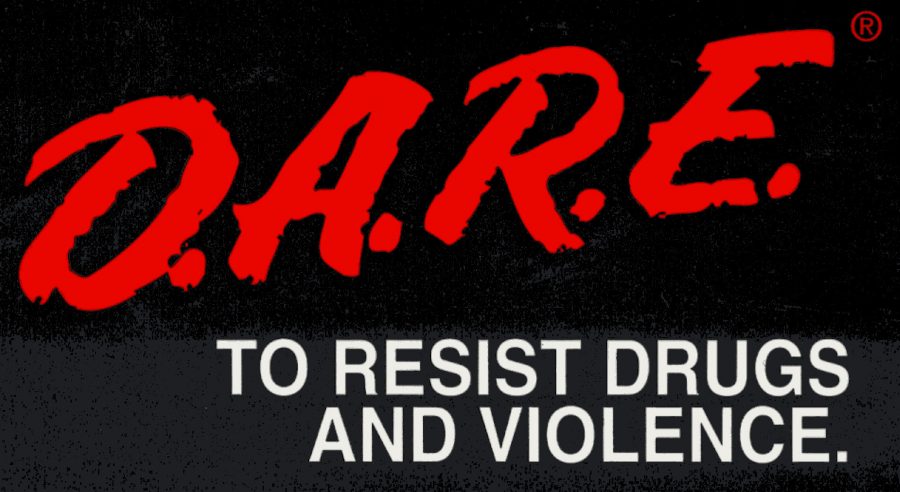Youth program to expand to high schools
August 3, 2016
In fall, fifth graders won’t be the only ones acquainted with the iconic cartoon lion that represents the Drug Abuse Resistance Education program, more commonly known as D.A.R.E.
For the first time since the program’s inception in 1983, D.A.R.E. curriculum will be taught regularly in high schools throughout the country, D.A.R.E. America’s Director of Communications Richard Mahan, told The Pioneer. The new curriculum was announced earlier this month at the at 29th D.A.R.E. International Training Conference, which took place from July 19-21 in Atlanta.
D.A.R.E. is a nonprofit organization that educates students about violence, drug and alcohol abuse and how to make good decisions. The new high school curriculum will be based on these core values, yet tailored to focus on issues relevant to teens, such as making safe decisions on prom and graduation nights, and the dangers of drinking and driving after parties, according to Mahan.
Traditionally, the D.A.R.E. program was taught in fifth grade classrooms but was expanded to middle schools in recent years. Mahan said the curriculum has been adapted to reflect issues that are prevalent among teens today, like cyber-bullying, and receives an update every few years.
D.A.R.E. started as a grassroots program in 1983 and was started by Los Angeles Police Chief Daryl Gates, who believed that arresting people for drug use was an ineffective way of lowering drug rates, according to Mahan.
Gates believed that educating young people on the dangers of drug and alcohol use early on would discourage substance abuse later in life. He initiated a partnership between the LAPD and the Los Angeles Unified School District, which developed the first curriculum shortly after.
At present, D.A.R.E. curriculum can only be taught by police officers who undergo 40 hours of training at a school resource officer class and an 80-hour D.A.R.E. school for instruction on specific curriculum, explained Sgt. Kevin Fraser, supervisor of community services and school units at the Santa Clara Police Department. In order to pass the training program, officers are required to teach a course in a school in a low socioeconomic area in either Southern California or Las Vegas.
The curriculum, which is science and evidence-based and developed by universities, is typically taught once a week over a 12-week span. The lessons are choreographed in a “building-blocks style,” Fraser explained, and lead to an overall message. At the end of the course, students write a final essay that encourages them to share what they’ve learned and provide examples of good decision-making in different scenarios.
Head D.A.R.E. officer at the Tracy Police Department, Steve Abercrombie, has taught the program both part and fulltime since 1994, eight years after he was hired on as an officer with the Hayward Police Department. He began working part-time as an instructor at the TPD in 2002 and continued even after retiring due to a back injury in 2005. Abercrombie currently teaches in 75 fifth grade classrooms annually.
Abercrombie believes D.A.R.E. is more important now, more than ever because it allows students to connect with officers in a positive environment. “The current belief, opinions [and] judgements regarding police officers is very disturbing,” he said. “We are seen as the enemy in many communities and through the media. People need to understand that 99 percent of the officers care and want to help.”
Abercrombie said he solved three murders in Hayward because the witnesses — 19 years old in two of the cases — would only speak to him, their former D.A.R.E. officer, who had run the program when they were 11 years old.
At its peak, D.A.R.E. frequented approximately 80 percent of schools in America, however the 2007-08 recession, coupled with the Sept. 11 attacks in New York resulted in severe cutbacks of the program in schools throughout the country, said Mahan. Officers who instructed the program were pulled from schools and relocated to the streets, the municipalities funding D.A.R.E. “tightened their belts,” said Fraser. The effectiveness of the program is difficult, if not impossible, to track so many school districts that determined that the program wasn’t a priority.
The SCPD outlasted the recession and has managed to offer D.A.R.E. education for over 20 years. “We’re kind of an oddity,” said Fraser, who attributes the program’s endurance to the solid “tax base” of the Silicon Valley.
Fraser explained that D.A.R.E. funding is tied in to taxes, cities and school districts to help cover the costs associated with the program, such as training materials, books, lesson plans and t-shirts. The school district pays the police department per student and the police department, in turn, pays for the officer’s training.
Fraser said three officers from the SCPD are currently assigned to teaching D.A.R.E. in 15 elementary schools, three middle schools and additional private schools within the Santa Clara Unified School District.
The program is funded through D.A.R.E. America, which raises money through car washes, kiwanis club donations and volunteer groups like “D.A.R.E. to Kare,” which organizes toy drives, sweepstakes cards and “kare kits” for displaced families, according to Mahan.
Today, D.A.R.E. is taught in all 50 states and 52 other countries, according to Mahan.

















